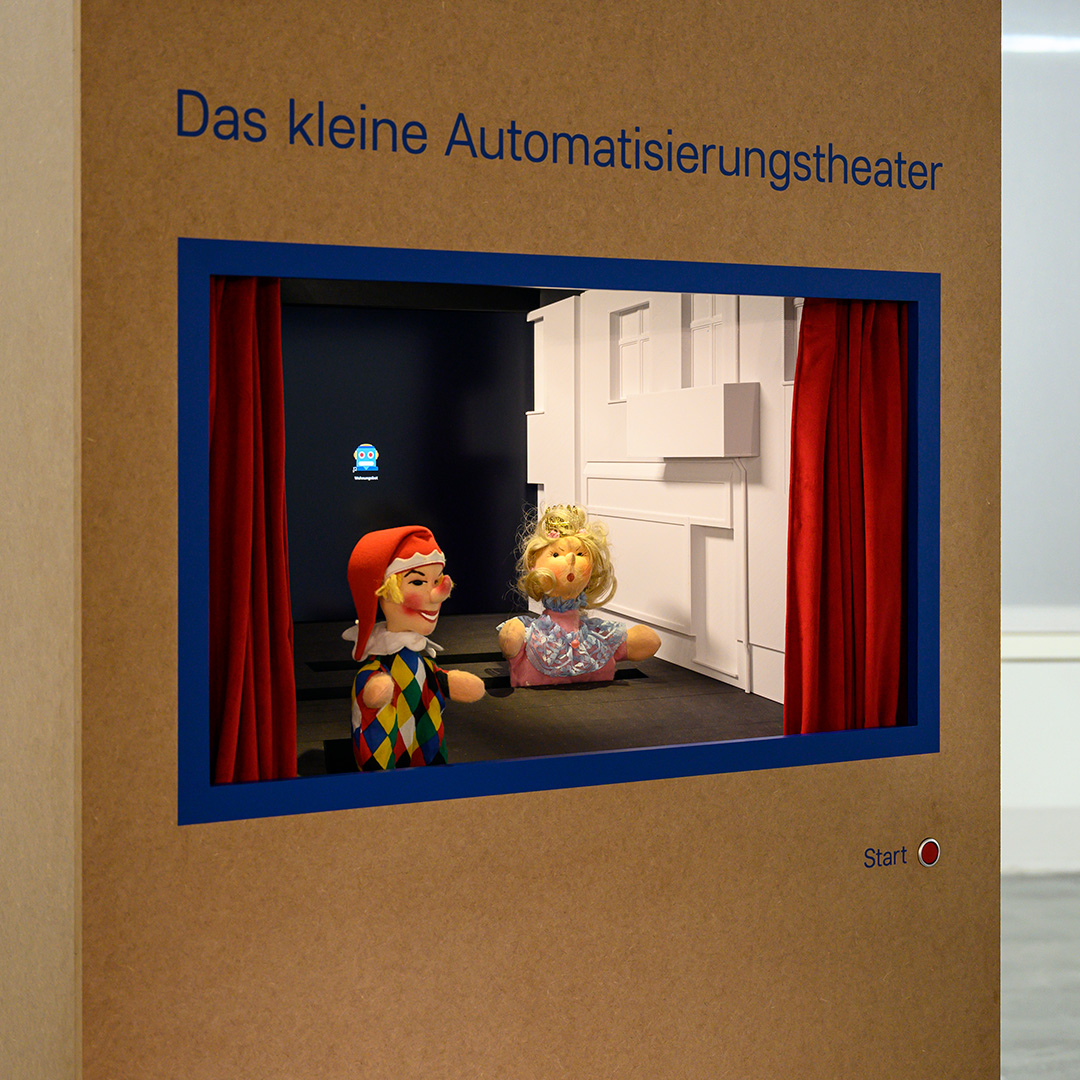
Courtesy Clemens Schöll. Copyright: Ortrun Bargholz
At the center of the exhibition "The revolution will not be automated" is the 'small automation theater'. The 17-minute fully automated puppet theater installation uses classic hand puppets to tell the story of the Wohnungsbot. The Wohnungsbot is a free, open source software that Clemens Schöll developed and released in 2019. The software acts as an "ibuprofen for apartment hunting" and seemingly frees people from the symptoms of rent madness in Berlin. After an initial euphoria, however, the situation in the play turns against the apartment seekers and the question arises: Can there be technical solutions to social problems?
The puppet theater is the third and last part of the work cycle "Of someone who went forth to find a flat in Berlin" - An automation-drama in three acts". Based on the search for an apartment in Berlin and the problems associated with it, the works address the current and future social challenges posed by automation. This promises liberation from work, but often works to the disadvantage of already precariously living population groups in ways that are not very visible. The characters and the puppet theater play with the technological contexts and their stereotypical roles in the format and in meta-narratives.
Clemens Schöll's work with automated puppet and object theater seeks narrative forms to make automation, technical systems and their social consequences tangible and visible. The absence of a playing person shifts the focus from the psychological subject to the machinery as a symbol of the acting structures. The familiarity of the characters and their wit invite people to engage with the complex and abstract contexts.
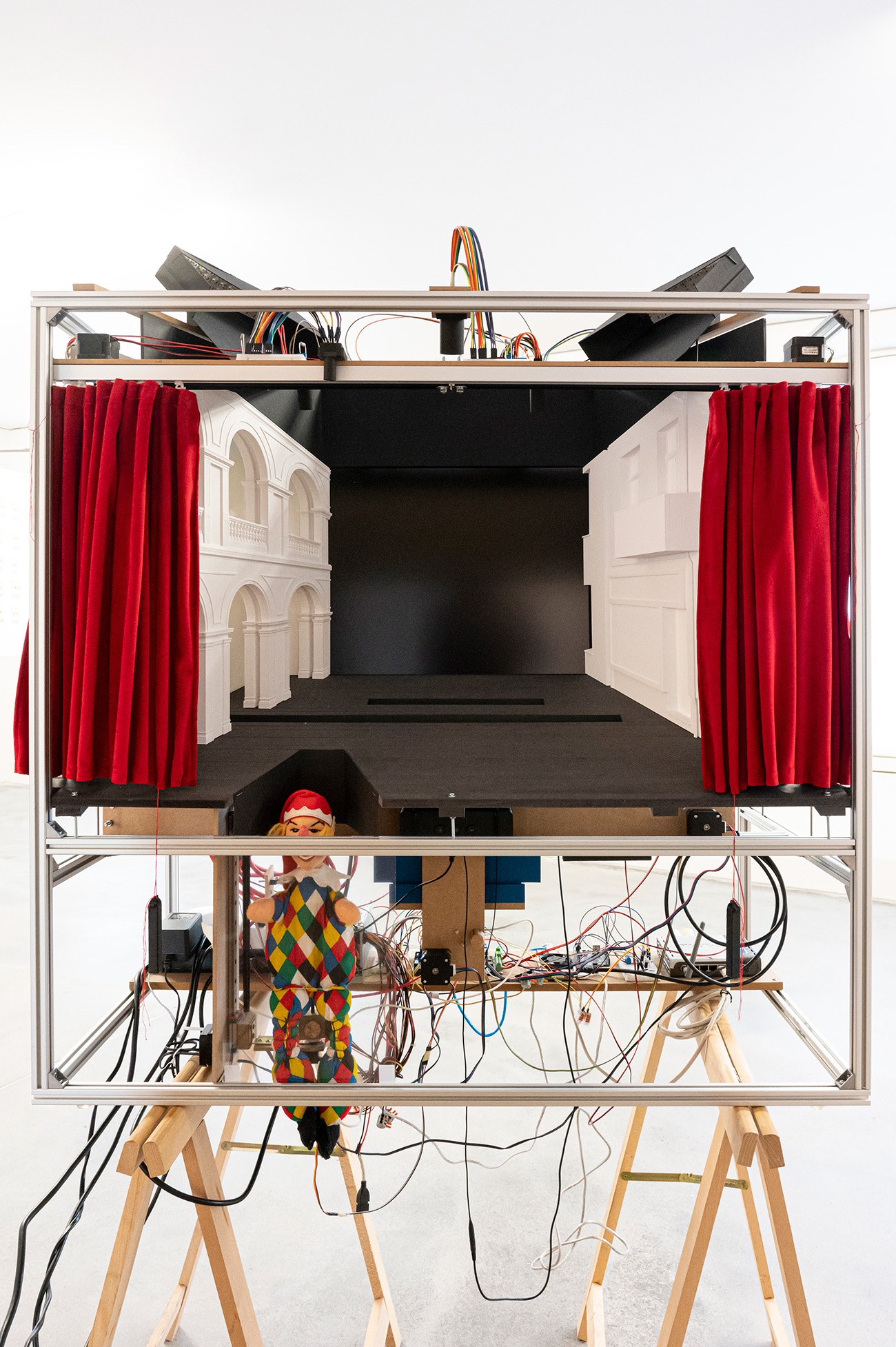
How is Today
Mixed media (series), 2021
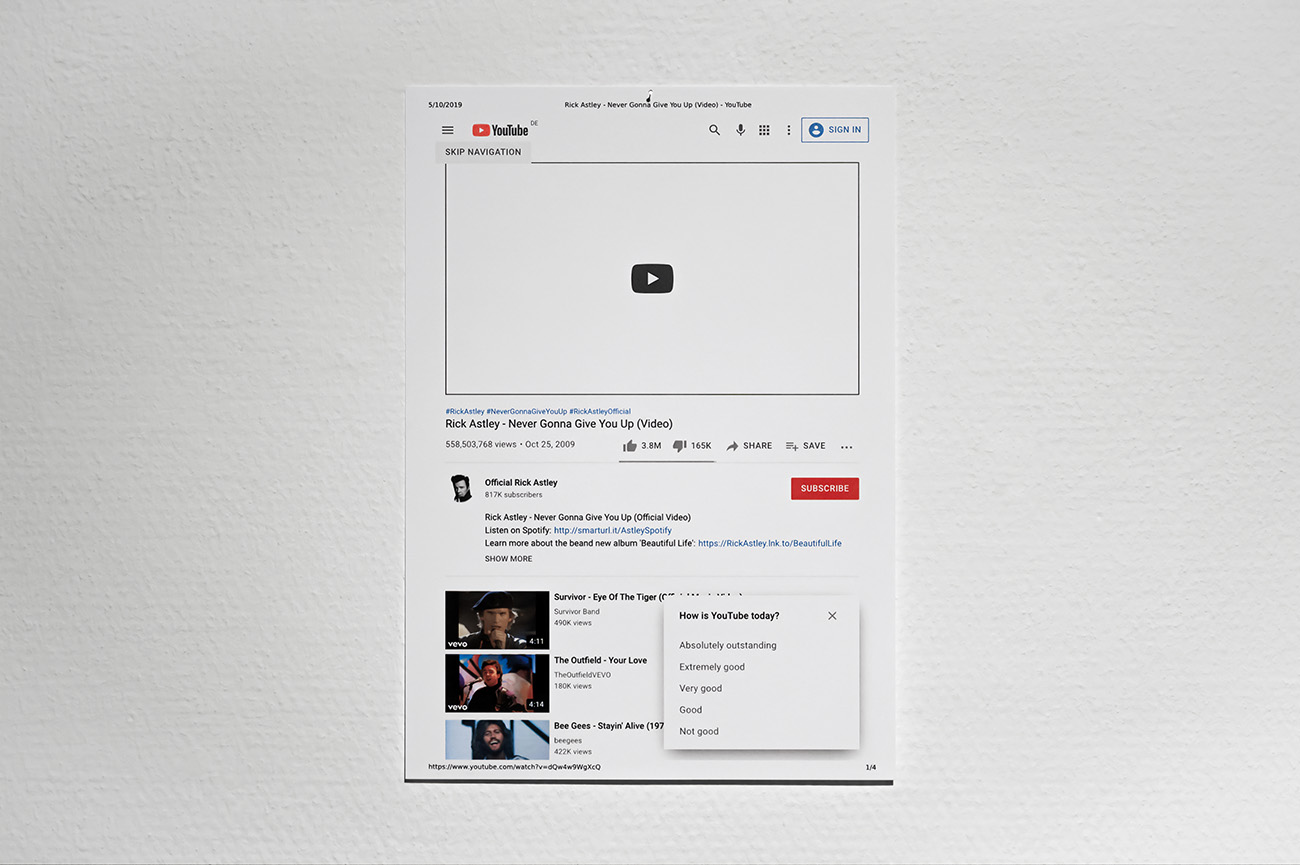
This three-part mixed media series departs from a YouTube screenshot from 2019 to reflect on our survey driven 'customer satisfaction' society.
The starting point and first part of the work, subtitled "Extremely good customer satisfaction", is presented as a simple printout from YouTube. Against the background of the video made legendary by the Rickrolling meme floats a pop-up: How is YouTube today? The over-affirmative over-positive answer options make the inconspicuous box emblematic of the evaluation culture. Everything is constantly evaluated (as positive) and in the background, mostly invisible, the evaluations are automatically used for disciplinary (negative) purposes in the same course.
The subsequent parts in the series shifts this priming towards the viewers: the supposedly empathic question "How are you [today]?" becomes both a pressure to feel good and an outsourcing of actual empathic and emotional labor.
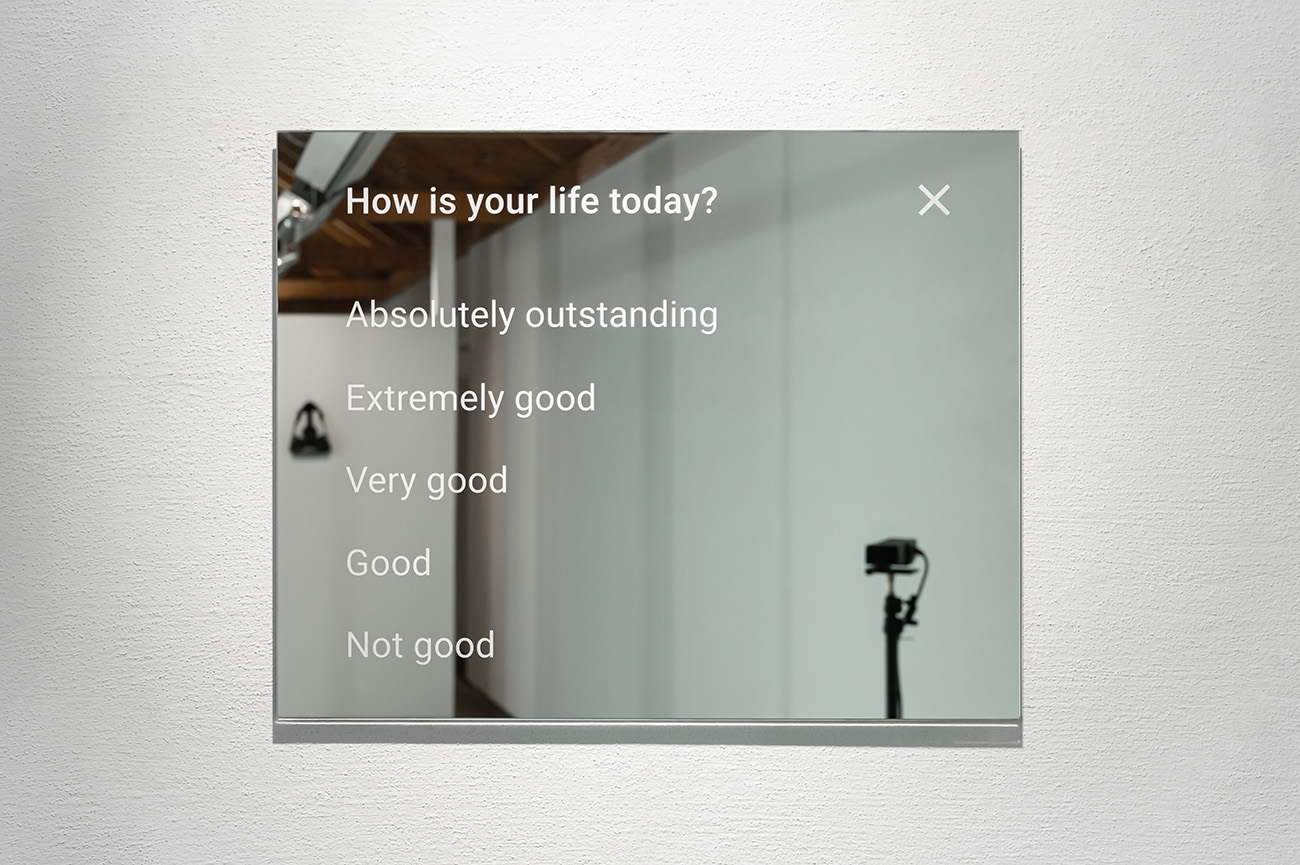
The final part is a (real) feedback terminal, positioned seperate from the other parts at the exit of the exhibition without any labeling as an artwork. It closes the circle by subjecting the viewers and the exhibition to the same quantified evaluation principles.
Are you satisfied with today's visit? And what are the implications of your (dis)satisfaction?
Feedback terminal (ready-made) with custom print
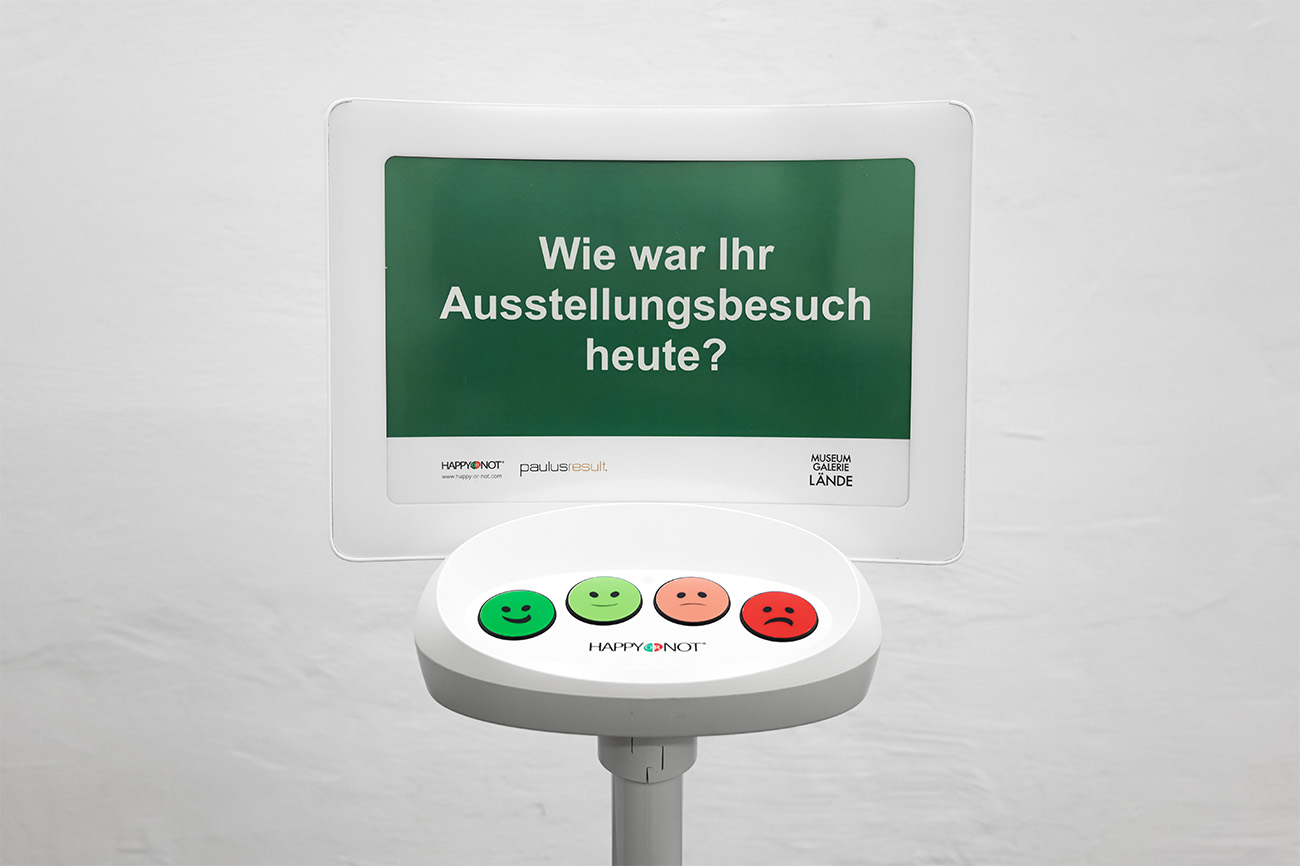
0% virtual reality / 100% virtual reality
with Ortrun Bargholz
Smartphones insert banknotes with motifs of baroque architecture into two plastic cardboard viewers. Is this the real virtual reality?
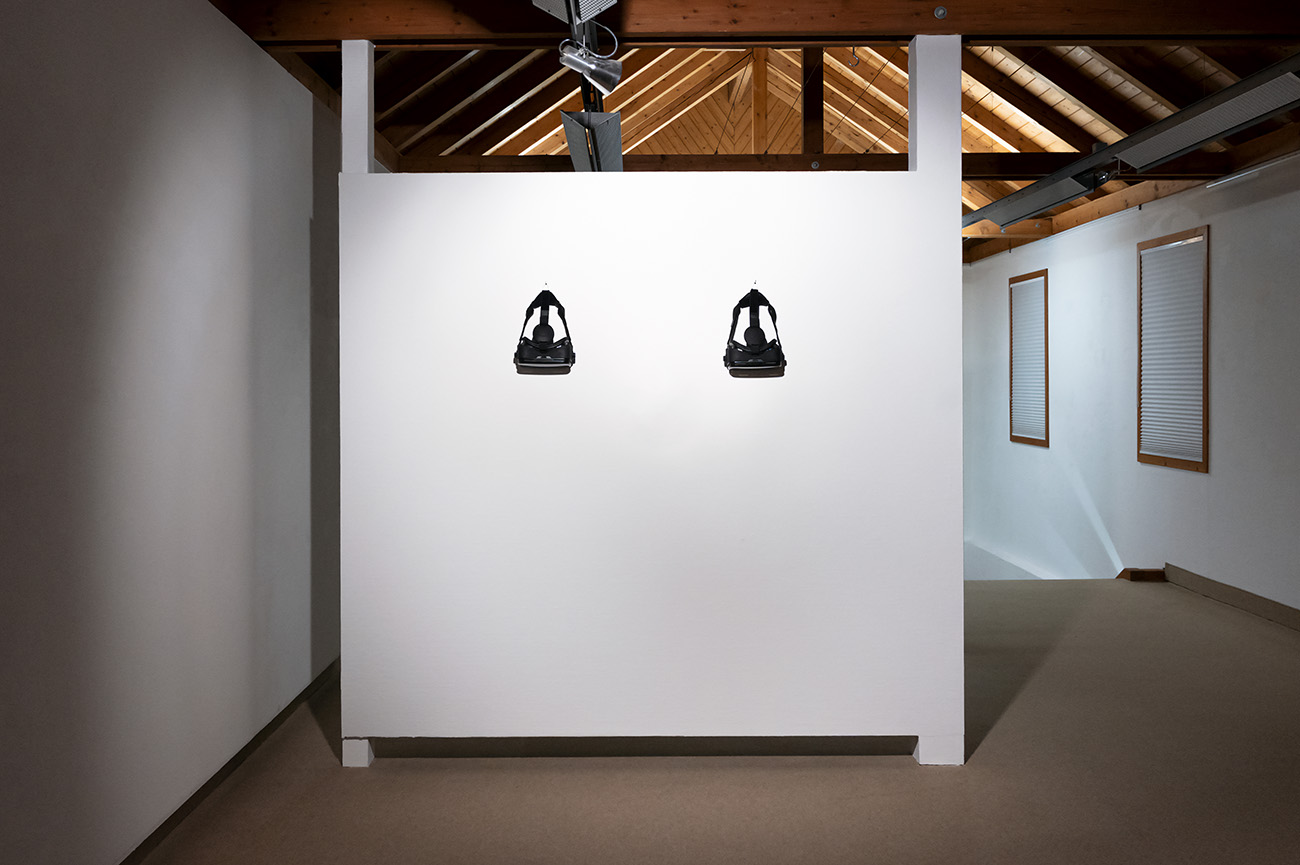
From Promised Reality:
Through this unexpected use of VR glasses, recipients are confronted with the question of what is meant by 'virtual reality' in the first place. The meaning as something that "does not physically exist but is made to appear by software "1 in the sense of a digitally generated 3D environment only became established with the increasing spread of computers. Since the 15th century, virtual has been understood to mean "to be something in essence or effect, even if not real or factual".2 Thus, the idea of a nominal value of money is also entirely virtual.
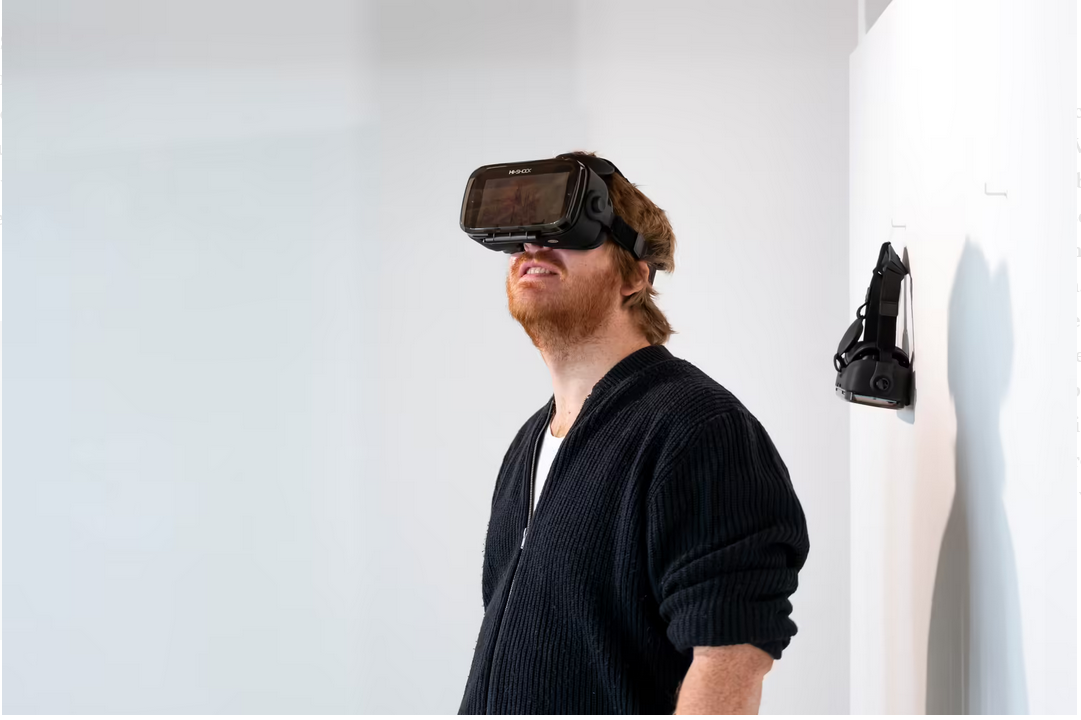 Some viewers of the work may be disappointed, as they already see the VR glasses as an object as a technological promise that is not fulfilled. However, the work offers plenty of virtual reality: banknotes, fictitious architecture on banknotes, historicizing façade elements on a new concrete building, as well as historicizing façade elements on banknotes. According to Guy Debord's understanding in La société du spectacle (The Society of the Spectacle), many elements that would have been experienced directly in earlier societies have "escaped" into an imagination or representation under modern production conditions.3 The architectures depicted on the banknotes are true simulacra in Jean Baudrillard's sense, because they precede reality.4
Some viewers of the work may be disappointed, as they already see the VR glasses as an object as a technological promise that is not fulfilled. However, the work offers plenty of virtual reality: banknotes, fictitious architecture on banknotes, historicizing façade elements on a new concrete building, as well as historicizing façade elements on banknotes. According to Guy Debord's understanding in La société du spectacle (The Society of the Spectacle), many elements that would have been experienced directly in earlier societies have "escaped" into an imagination or representation under modern production conditions.3 The architectures depicted on the banknotes are true simulacra in Jean Baudrillard's sense, because they precede reality.4
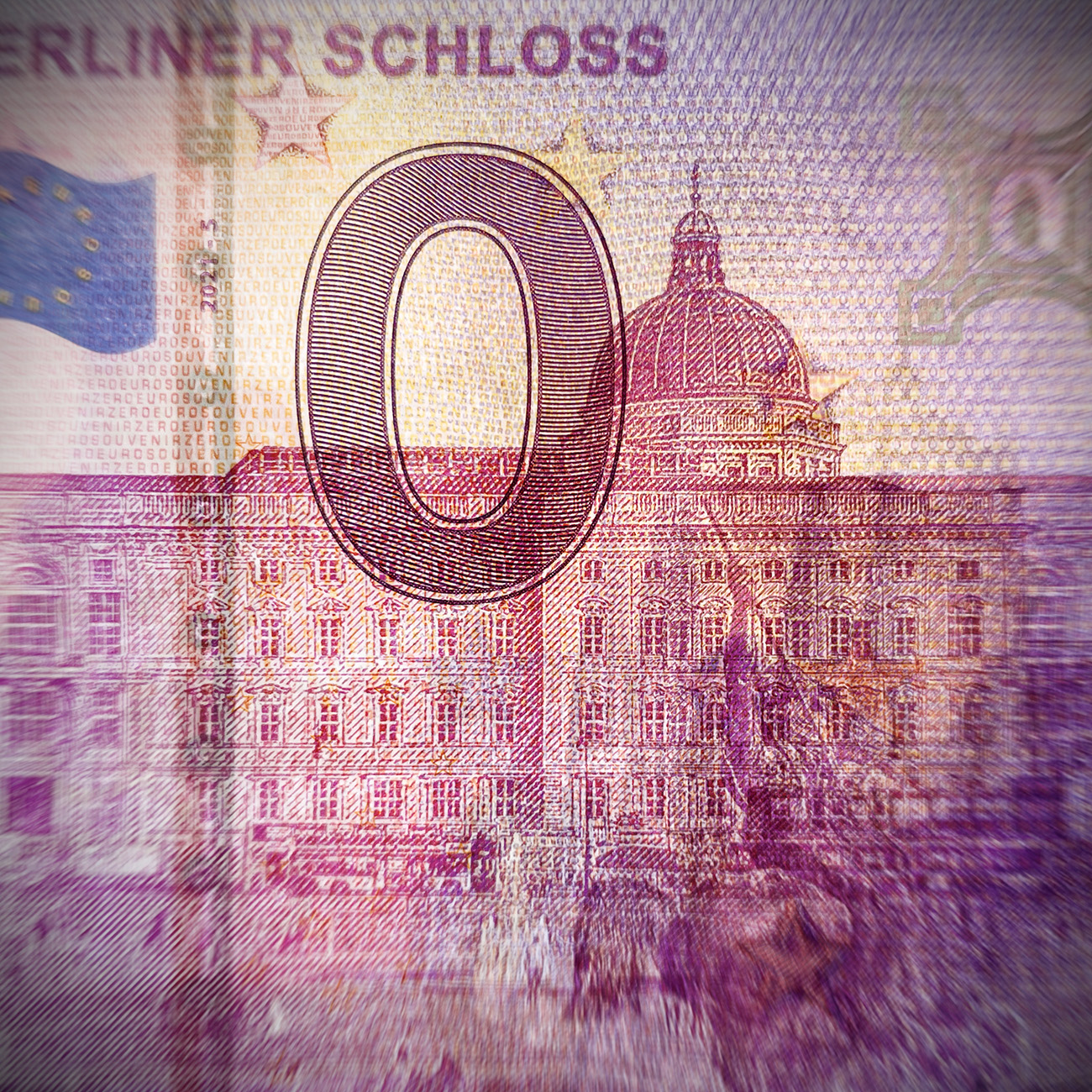
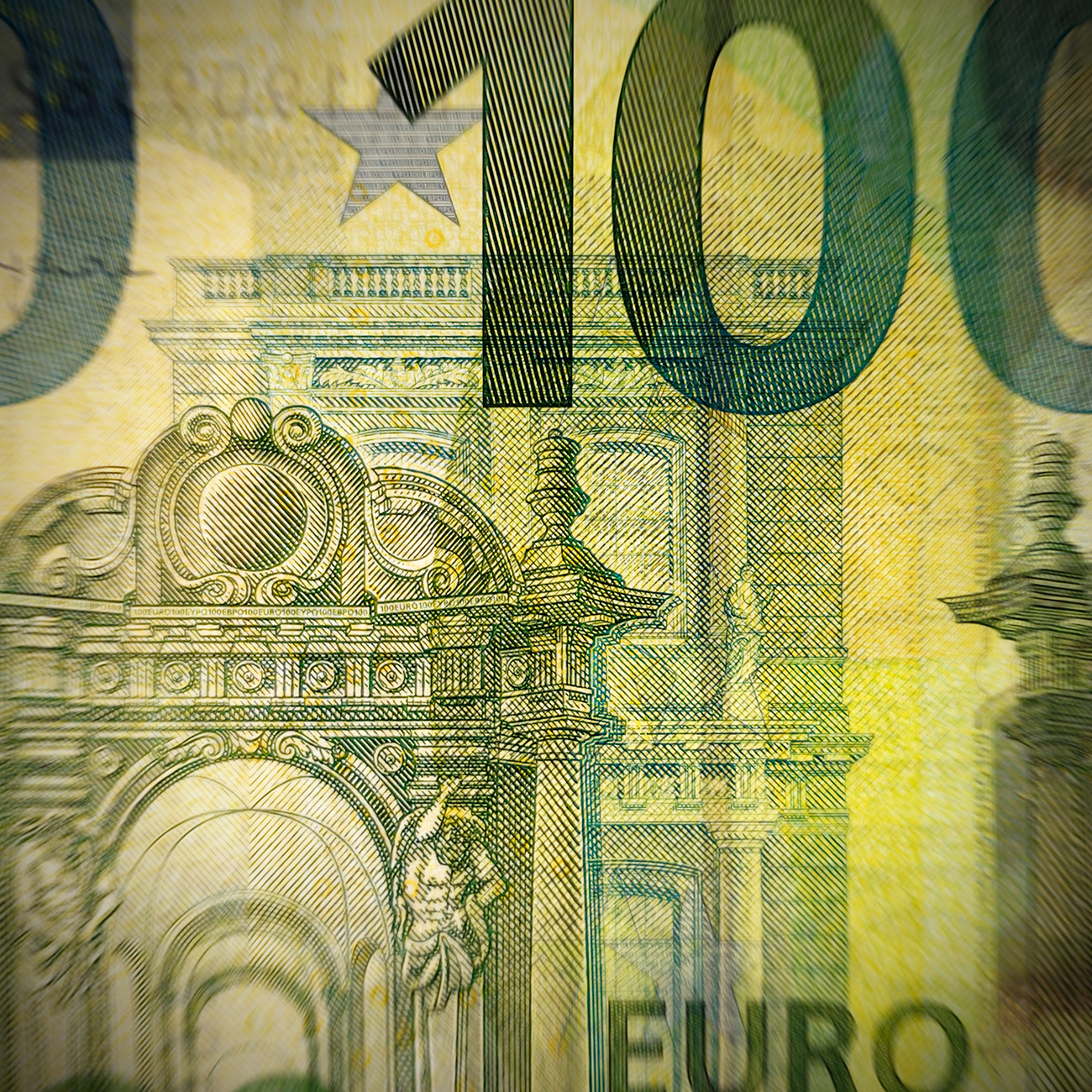
¹ „Virtual“. „not physically existing but made to appear by software“
2 „Virtual“. „being something in essence or effect, though not actually or in fact“
3 Debord, La société du spectacle, These 1. „Tout ce qui était directement vécu s’est éloigné dans une représentation.“
4 Baudrillard, Simulacres et simulation.